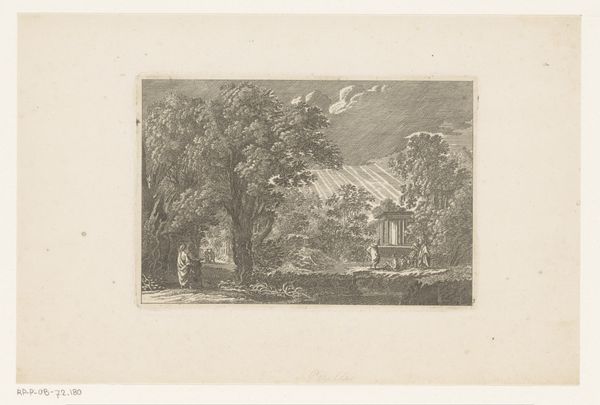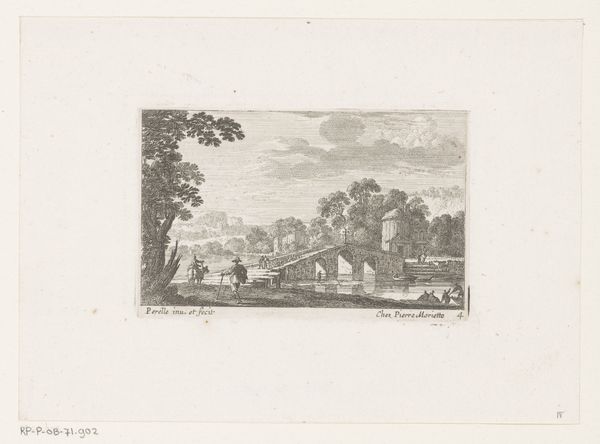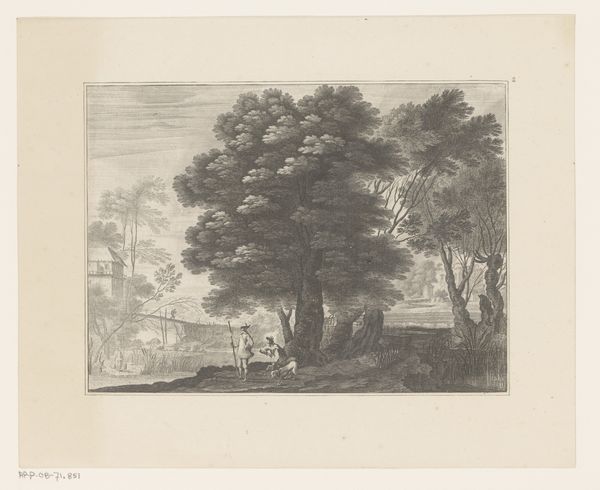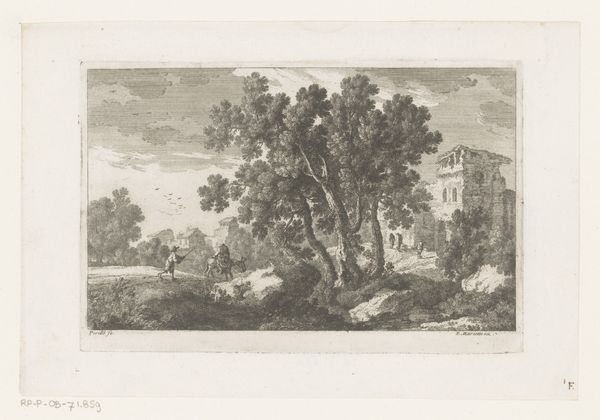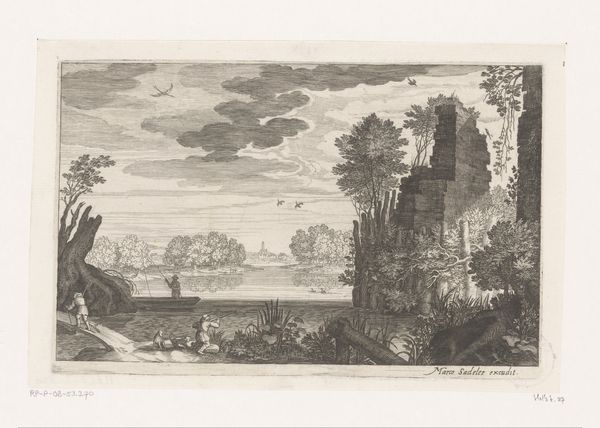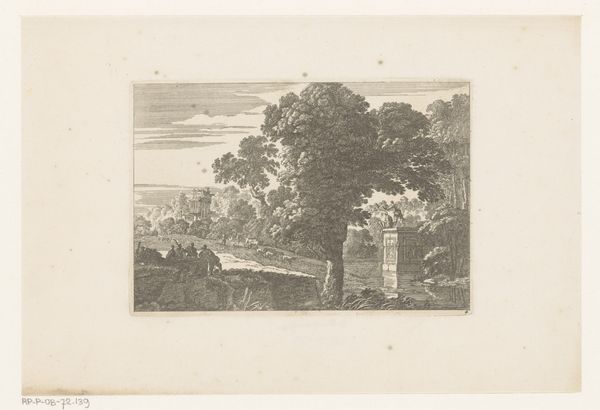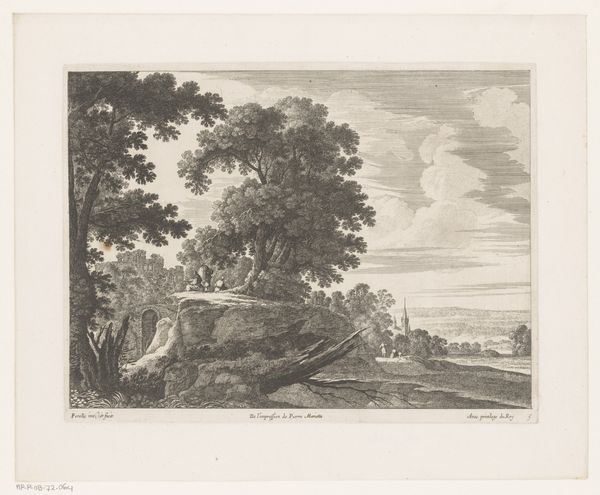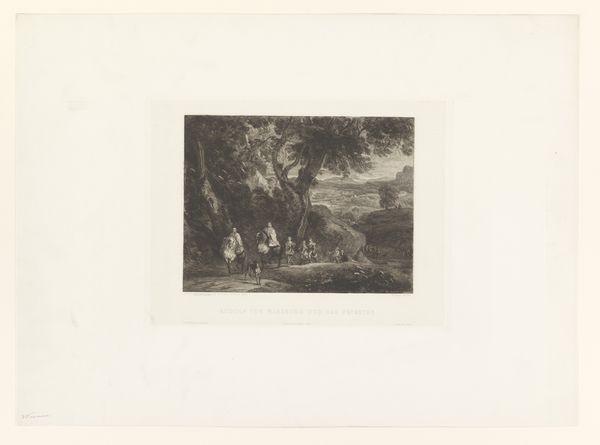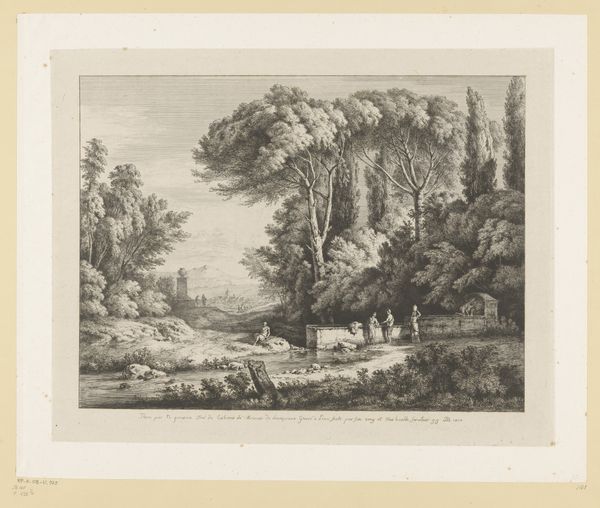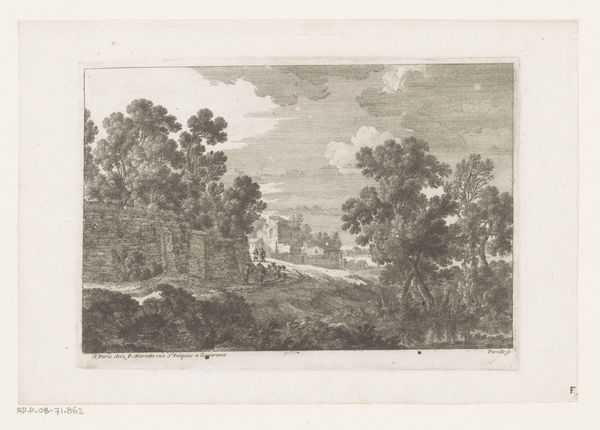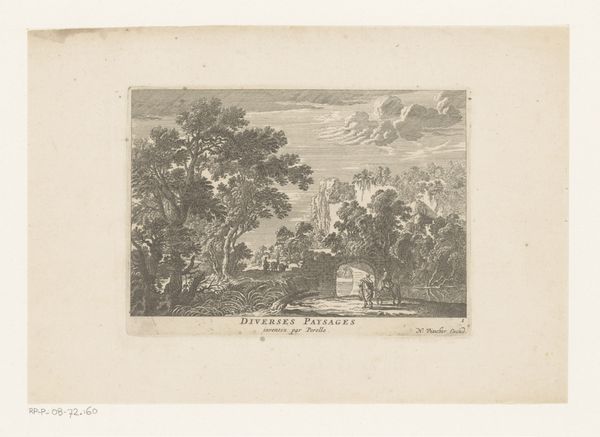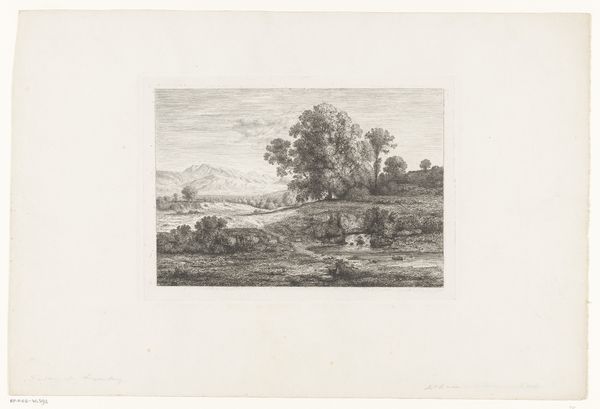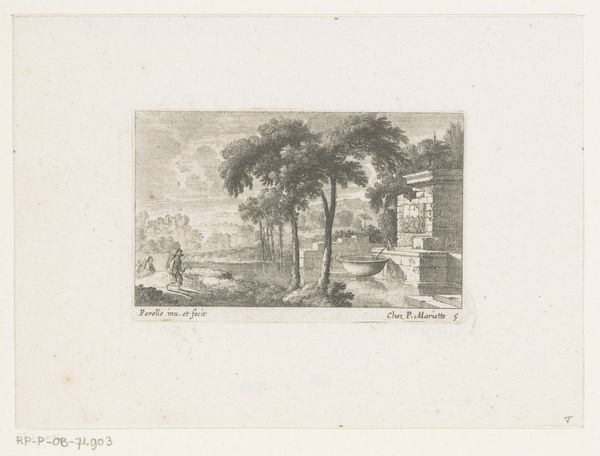
print, etching
#
narrative-art
#
baroque
# print
#
etching
#
landscape
#
cityscape
Dimensions: height 77 mm, width 122 mm
Copyright: Rijks Museum: Open Domain
Editor: So, here we have "Figuren bij huis aan rivier", or "Figures by a House on a River" by Nicolas Perelle, created sometime between 1613 and 1695. It’s an etching, which gives it this wonderful, detailed line work. The whole scene feels very composed, almost staged. What stands out to you in terms of how this etching reflects its time? Curator: Well, considering Perelle's work falls within the Baroque period, we have to examine the social and institutional forces at play. Landscapes weren't just about pretty scenery; they were deeply tied to ideas of land ownership and power. Does the seemingly idealized image of country life, with figures calmly posed by a quaint cottage, reinforce existing social hierarchies? How accessible would this image have been? Editor: That’s fascinating, I hadn't considered the access to such an image. What's striking is that while it presents itself as this pastoral scene, there’s a formality in the figures that prevents it from feeling truly organic. Curator: Exactly! It isn't simply documenting reality, but rather constructing a certain vision of it. Look closely at where this print was meant to be sold and disseminated. Did its location within particular art markets dictate who consumed it, and what messages it was reinforcing or subtly challenging about the existing societal power structure? How does it operate within a growing market for collectible images? Editor: So, even something that looks straightforward can actually be a complex reflection of the social landscape… It really makes you rethink the role of the artist during this time, shaping perception alongside documenting the world. Curator: Precisely. We see art not just as aesthetic objects, but as key documents within cultural history that influence and reflect societal attitudes of wealth, status and political power.
Comments
No comments
Be the first to comment and join the conversation on the ultimate creative platform.
